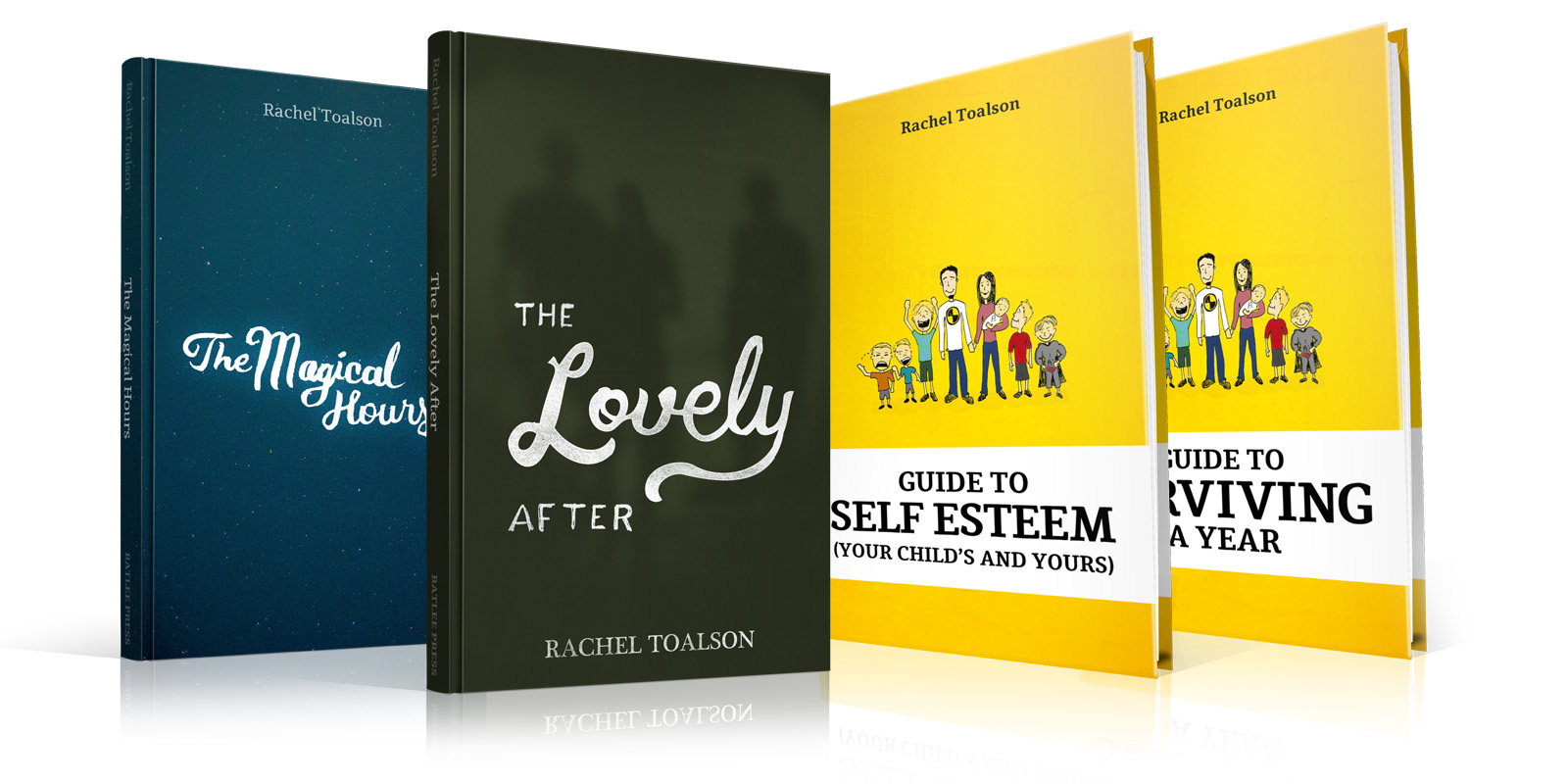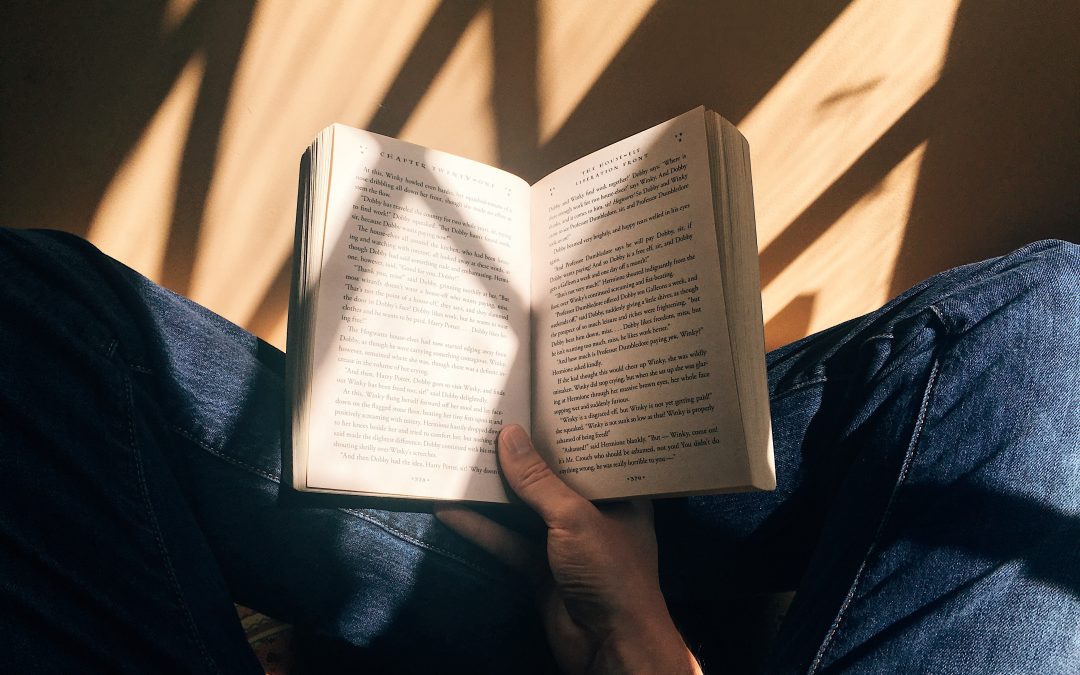
by Rachel Toalson | Books
1. Reading: I just finished Erin Entrada Kelly’s newest middle grade book, Those Kids from Fawn Creek. What I liked most about this one is that it humanizes the people who make mistakes, who maybe have a moment (or more than a moment) of meanness. That’s an important lesson for kids to learn and for all of us to remember. We’re all just doing the best we can, right? (Erin Entrada Kelly won the 2018 Newbery medal with Hello, Universe, and her middle grade book We Dream of Space was a Newbery Honor book in 2021. Both are worth checking out.)
2. Reading: I’m currently on a research frenzy, reading everything I can about the 1900 hurricane in Galveston, which was the deadliest natural disaster and the worst hurricane in U.S. history. (Why am I researching? For a story, of course!) The best book I’ve read about it is Erik Larson’s Isaac’s Storm: a Man, a Time, and the Deadliest Hurricane in History. Larson is one of my favorite nonfiction writers. He’s written many historical books. I haven’t read them all but can highly recommend In the Garden of Beasts: Love, Terror, and an American Family in Hitler’s Berlin; Dead Wake: the Last Crossing of the Lusitania; and Devil in the White City: Murder, Magic, and Madness at the Fair that Changed America. Larson also released his first novel, No One Goes Alone, last year. It’s been on my TBR list for a while now, called “a ghost story grounded in history.” Who wouldn’t want to read that?
3. Reading: As a mom trying to still be productive and creative while my kids are home for the summer, I found this piece particularly relevant. And cool. And not just for moms. Or writers. How many of us find our “second acts” later in life? Doing what we love and loving what we do? It’s never too late to become who we want to be and do what we dream of doing.
4. Reading: Ellen Hopkins, one of my favorite novel-in-verse authors, has a new middle grade novel in verse out: What About Will. Hopkins is best-known for her young adult fiction (The You I’ve Never Known is so far my favorite) but started publishing in the middle grade space a few years ago. I liked this one so much I put it on several of my kids’ summer reading lists. Another of Hopkins’s middle grade gems: Closer to Nowhere. I highly recommend both!
5. Watching: On the TV side, my husband and I are currently making our way through Community. This is an older show, and I know we’re late to the party, but we’re really enjoying using it as a “palate cleanser” after some heavier shows (including Netflix’s Stranger Things, which recently released its fourth (and, I believe, final) season. I need some laughter after the terror!). You can watch Community on Netflix.

by Rachel Toalson | Wing Chair Musings
Everybody loves a celebration, don’t they?
The problem is, I often forget to celebrate.
This is terrible, you might be thinking. How in the world can a person forget to celebrate?
As someone who keeps a very meticulous calendar, it might even seem unbelievable that I forget to celebrate. And of course I don’t forget to celebrate my kids’ birthdays or the last (or first) day of school or every little amazing thing that happens in someone else’s life. There is always something worth celebrating when it comes to someone else.
But celebrating myself? Not so much.
I was recently reminded of this rather careless attitude of mine while talking to a friend. She hasn’t been to our Zoombie writing group for a while. When I asked her why she’d been missing, she said, “Well, I finished writing my chapter book and sent it off to my agent, and I just figured I’d celebrate for a while.”
I thought, When’s the last time I celebrated finishing a book? I thought, I usually just move right on, like it’s no big deal. (It’s a big deal. Writing 70,000 words over and over and over again? Seeing a project through to the finish? Making anything that adds value to the world? Those are all big deals.) I thought, I’m not even sure I properly celebrated getting a book deal.
I thought, What does a celebration really look like?
I don’t think I’m alone in this.
Celebrating yourself isn’t quite as easy as celebrating other people.
We should make it so.
Celebrations are uplifting. They’re markers of our hard work. We don’t work hard for the celebration, of course, but it allows us a moment to really take stock of the strength and fortitude and perseverance it takes to finish something, to share it with the world (or colleagues or teachers or friends), to give something back.
We can celebrate our hard work. We can give ourselves permission to acknowledge that while we came close to the edge of giving up (really, really close), we didn’t give up. We can celebrate the chapter written today, the newly perfected song lyric after so long feeling stuck, the second step of our project done and dusted, even if there are ten more to go.
We can celebrate in big, throw-a-party ways or tiny take-a-nap-during-this-work-session ways. It doesn’t really matter how we celebrate.
Celebration, I’m coming to understand, is a state of mind.
What would it look like if we turned a celebratory eye to the seemingly small, insignificant things of our world? We finally mowed the lawn after four weekends of having it on the to-do list. Celebrate! Our kid found his missing left shoe. Celebrate! We made it through the whole day without saying, “I was, like.” Celebrate!
I know these are mostly silly examples of small celebratory accomplishments, but I also often wonder now how much joy we might see if we looked at everything with celebratory eyes—and how much we miss when we don’t.
Here are some of my favorite ways to celebrate:
1. Watch a show or read a book.
Of course I’m always reading books for my writing career (because reading widely is one of the surefire ways to make you a better writer), but I also sometimes like to celebrate by taking half an hour or an hour to watch a favorite show. I’m currently watching Downton Abbey, a historical saga produced by the BBC (it was just taken off Netflix, but you can watch it on Amazon Prime as well). Because I don’t often take the time to watch shows, this really feels like a celebration when I do it.
2. Give myself a day off.
I’ve come to understand (or I’m starting to, at least) that days off are like celebrations in and of themselves for a person like me. I don’t often give myself days off, except for the occasional Sabbaticals I take to step away from projects and let my brain refresh itself. So a day off, or a half-day off, feels like a sort of celebration, especially when I can do something special with my friends or family. Which leads me to the last (and best) way (in my opinion) to celebrate.
3. Making new memories with family and/or friends.
I love sharing a special meal or having a small dessert party or buying (vegan) ice cream to have sundaes with my kids. Going out to a restaurant. Hosting a potluck. Seeing a movie in the theater. Visiting a park for a nature bike ride. All these things feel special and can be considered celebratory, with the right attitude and under the right circumstances (such as a finished manuscript or powering through a particularly difficult creative project or a week spent building a new habit like daily meditation).

by Rachel Toalson | Books
1. If you’re looking for a fantastic middle grade fantasy series, look no further than Angie Sage’s TodHunter Moon series. It’s three books—PathFinder, SandRider, and StarChaser—and so full of personality and humor, and I cannot say enough about it. Angie Sage is also the author of the seven-book Septimus Heap series, which you might want to read first. I read it years ago and (shhh…this is a secret) thought it was even better than Harry Potter. Sage’s worldbuildling is fantastic, and her characters are intelligent, hilarious, quirky, and thoroughly entertaining.
2. I really enjoyed this piece in The Atlantic. It’s a long read, but if you’ve felt the divide that is our world today, it’s well worth a look. Jonathan Haidt, the author of the piece, shares a look at the ways social media has perpetuated the divide. It’s very interesting to consider.
3. My husband and I sped through episodes of Apple TV’s The After Party. It was so well done! It follows characters who have just gone to their high school reunion and met up at an afterparty—where someone is murdered. I don’t typically watch murder mysteries, but this one was hilariously quirky. What was so brilliant about it was that each character told their own story in their own way. As an author, this was delightful to me. We’re always told that everyone in our stories, whether side characters or main characters, are the “heroes of their own stories.” And Apple TV did a fantastic job of showing that on the screen. This might be the only show I ever watch a second (or third) time, just to pick up on the things I missed the first time.
4. Speaking of Apple TV, they recently released a new series called Roar, pitched as “darkly comedic feminist fables.” That sounded perfect for me (plus there are some superstar actresses in it). I started watching it this weekend, and it’s both disturbing and hilarious at times. The episodes make you laugh, cry, cringe, wonder, shout, and do all the things good shows make you do. Do yourself a favor and binge in honor of Mother’s Day!
5. I recently finished Darcie Little Badger’s book A Snake Falls to Earth. If you haven’t yet read this one, it should be on your to-be-read list. The book earned a Newbery Award Honor and was long listed for the National Book Award this year, and it’s full of rich folklore and feels like a old story told in a fresh way. Really well done. Darcie Little Badger is also the author of Elatsoe, which was also a great read!
(Photo by veeterzy on Unsplash)
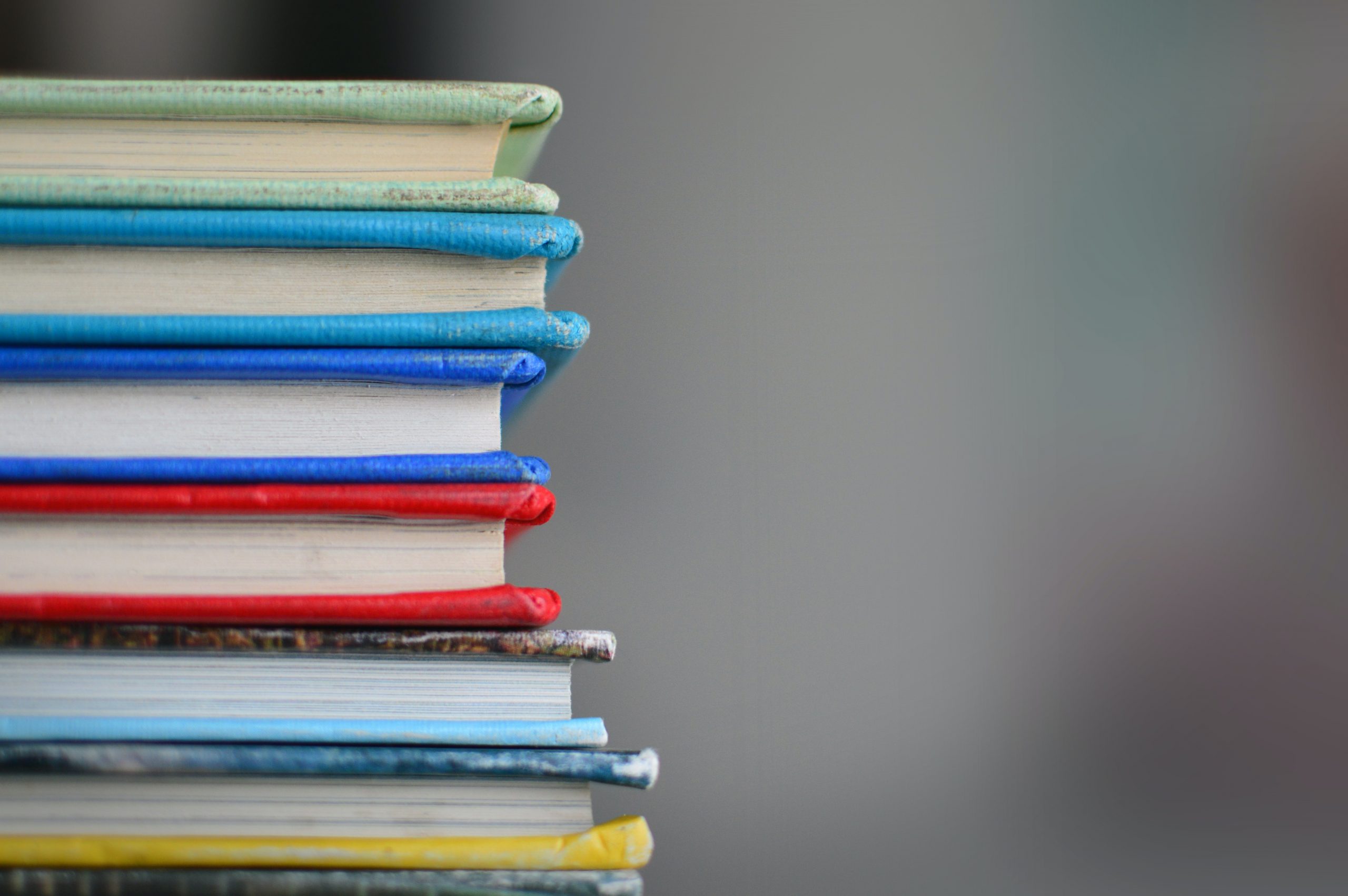
by Rachel Toalson | Happenings
Every Friday at 11:30 a.m. CST my husband and I present a live podcast on Facebook, YouTube, and Twitter. It’s called In the Boat With Ben and Rachel. We talk about creativity and productivity and what it’s like to be a creative person in today’s world. Here are the places you can watch and chat live:
FB: https://facebook.com/bentoalson
Twitter: https://twitter.com/bentoalson
YouTube: https://youtube.com/bentoalson
We also have a web site where you can sign up for a newsletter; we’re getting ready to launch this podcast, which will happen with a live launch party. We’ll be releasing the podcast episodes in all the regular podcast places, so you can always go back and listen as much as you want.
If you have any questions about creativity and/or productivity, be sure to get in touch, and we’ll consider it for a podcast episode.
Other news
I’m finishing up the final edits on the last two Fairendale books, which will release this summer, the six-year anniversary of the series. I’m hoping to have more to share about them in next month’s newsletter, but I can tell you that Book 19 follows the story of the Snow Queen (a Hans Christian Andersen fairy tale), and Book 20 follows the story of the Sea Witch (a Grimm fairy tale). I have really enjoyed writing both of these and am so excited to share them with you soon!
2022 books released
Below you’ll find the links for the books I’ve released this year. I’ve got more coming but don’t ever want to forget about these. For a look at all my books (including middle grade novels, adult essay collections, and just about everything in between), visit www.racheltoalson.com/writing.
Links:
Parenthetical Life
Ebook: https://amzn.to/3gGqhRF
Paperback: https://amzn.to/3rLlUeE
Hardcover: https://amzn.to/3HKwmI1
Ordinary Life
Ebook: https://amzn.to/3KlbpFi
Paperback: https://amzn.to/3MmfpY1
Hardcover: https://amzn.to/3LQUvPs
Sincerely Yours: letters in poetry
Ebook: https://amzn.to/3jsWWLX
Paperback: https://amzn.to/3rdwWZp
Hardcover: https://amzn.to/3uua9KH
(Photo by Kimberly Farmer on Unsplash)
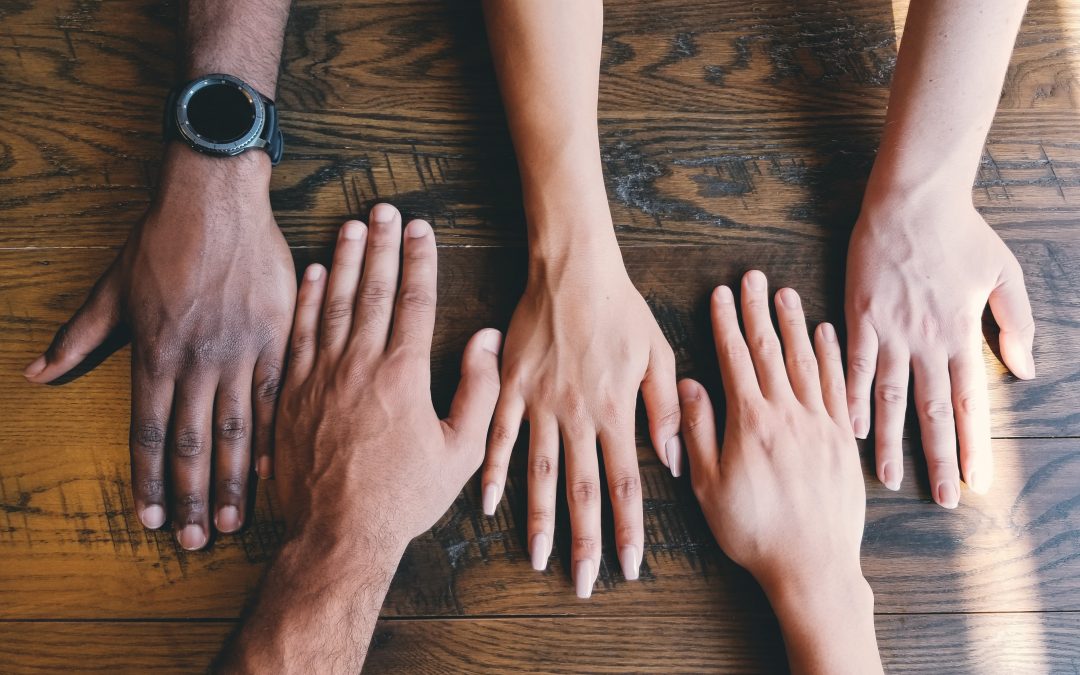
by Rachel Toalson | Wing Chair Musings
I used to think I needed to do everything alone.
Everything from my personal life to my professional life. Maybe it was an aversion to asking for help. I still don’t like asking for help.
But over the years, I’ve come to understand that we’re not meant to do everything alone. Not even most things. Even more than that, I’ve experienced the wonder and joy of collaboration.
About a year ago, I began a couple different collaboration projects with some author friends. One is an author who feels stifled by plotting. She flies by the seat of her pants. I joined her in flying by the seat of my pants—a change to my regular brainstormed, organized plots. We are still working on our story, and I am having such fun writing it. Our characters are as different as we are—quirky, confident, and utterly delightful.
The other author is a plotter, like me. I had a spark of an idea for a fantasy story with a hard-hitting emotional core. We spent two hours brainstorming by Zoom. And what we came up with is so much bigger than I might have come up with myself.
There is truth in the saying, “Two brains are better than one.” If that’s a saying. I think it is. Maybe I made it up, though. (Probably not. There’s nothing new under the sun, right?)
That’s not even the whole of collaboration.
Every morning I also meet with a group of writers by Zoom. We call ourselves the Zoombies. We spend the first fifteen minutes of our time together talking about our lives. We spend an hour and fifteen minutes muting ourselves and working on our individual writing projects. And then we meet at the end of that time to discuss how our day’s writing went.
Sometimes we really do talk about how our writing session went. Sometimes we bring each other questions: What do you think about this plot point? What would you do in this kind of situation? Is the way I’ve handled this problem believable?
It’s so helpful to have that real-time feedback, to think with more minds than one.
We have a wealth of expertise and experience at out fingertips. Our friends, our colleagues, all the members of our family, have different ways of seeing the world and unique ways of approaching life and problems and solutions to those problems. I know a lot about writing, environmentalism, and managing squeezed-tight time. My husband knows a lot about technology, philosophy, and how to take an effective break and rest. We collaborate on a daily basis so I don’t have to learn how to fix a broken computer and he doesn’t have to learn how to edit our son’s ELA picture book project.
I even collaborate with my children. (You haven’t experienced real honesty until you’ve asked a 7-year-old, “What do you think of this story?”)
We think bigger together. So I’ve stopped thinking it’s “cheating” to collaborate, to bounce ideas off the people in my life. Instead, I am increasing my own brain power by inviting them into the circle. And I am waiting in the wings, to do the same for them when the time comes.
In the meantime, I get to grow closer to the people I respect, admire, and genuinely enjoy and love. We grow closer in our relationships when we ask for help.
A win-win all around, if you ask me.
I hope you have a fantastic month of collaboration with the people in your life.
Here are some of my favorite ways to collaborate with others:
1. Partner with someone on a creative project
My first novel, The Colors of the Rain, was originally written as photo responses. What I mean by that is a friend of mine, Helen Montoya Henrichs, with whom I used to work at the San Antonio Express-News collaborated with me on a creative project wherein she would send me two photos a week, and I would write poems about those pictures. I had the idea to connect the poems into a story, and my novel in verse was born. Collaborating like this with a different creative form can not only spark our creativity but also help set up a method of accountability. I held my friend accountable for taking creative photos every week. She held me accountable for making consistent progress on my story.
2. Brainstorm solutions with someone or a group of someones
This can apply to a creative project you’re working on or even as granular as a problem you’re dealing with in your life. The people around us have so much expertise and sometimes know more than we do. It’s also helpful to get different perspectives, since we all see things differently. A wise friend of mine has run a business, has a Ph.D. in the psychology of giftedness, and has lived a different life than I have. I can’t tell you how many times I’ve asked her life advice for something. It’s invaluable having two heads to brainstorm the solution to a problem.
3. Start a podcast with someone else
A podcast is a great form for engaging conversation. And when you do one with someone else, you learn about that other person, and you also might learn some things about yourself. My husband and I have a podcast for creative people, and every week we learn something new about each other, even though we’ve been married almost nineteen years. It’s been fun to discover new things about each other and ourselves.
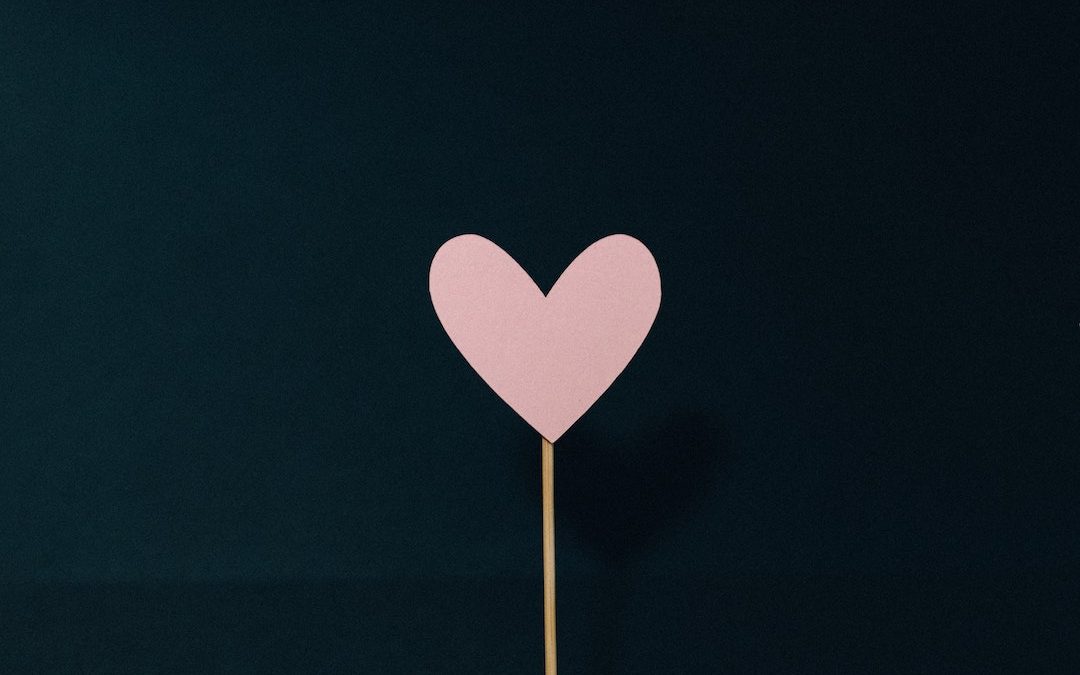
by Rachel Toalson | Writing tips
What are writing tips? I certainly had an idea for what I wanted them to be—what I planned them to be. Practical things that make us better writers (because you know what they say about teaching—the teacher learns as much as or more than the student). Useful things we could all take into our lives and plug into our stories or essays or poetry or marketing material or…whatever we’re writing. Answers to questions we’ve all had at one time or another.
But lately I’ve felt myself drawn to the more emotional things. Maybe it’s because, in talking with several of my writer friends, I’ve begun to realize that I’m not the only one who’s just…tired.
There’s a lot going on in our world. It takes emotional and physical effort to navigate everything, from politics to pandemics to winter storms (“I survived the 2021 Texas Winter Storm” is not something I ever thought I’d say in my lifetime…nor is “I lived through a pandemic”) and full houses that used to be empty at some point in the day.
I’m tired. We’re tired. A heart and brain and spirit can only take so much. And, well, we’ve taken enough.
Recently, I confessed to a friend that I’ve felt incredibly unproductive, noncreative, stymied in my forward motion. I walk around with a general sense of malaise, unable to focus like I used to. I waste time. I procrastinate—and those are not typical Rachel things to do. As a highly driven task-oriented person, I’ve never had a problem ticking off items on my to-do list.
Do you know how long it took me to call my dentist and reschedule an appointment that was canceled due to those six inches of snow Texas got in mid-February? Two weeks! The item kept moving to the next day’s list, because I couldn’t even summon the energy to pick up the phone and call.
Bills unpaid, sweet potatoes un-roasted, granola not made, book still not finished, that impulse buy at Target not returned, library books overdue, journal left unwritten in for the last three weeks.
We’re all dealing with this in one way or another. (National Geographic had a great article about it recently). Adrenal fatigue is real. We’re not made to navigate crisis after crisis after crisis, at least not in our comfortable modern lives.
So here’s the deal. In January I talked about writing in the small spaces, finding places to create in 5-minute, 10-minute, 15-minute increments.
But sometimes? It’s okay to take a break, for however long you need to. It’s okay to say, Not this week. I just can’t do it this week.” It’s okay to end a long, trying day in front of a screen, watching “Schitt’s Creek” (that’s currently how I spend my Friday evenings).
It’s okay—as long as we don’t stay there.
It’s important to give ourselves time and space to heal from those challenges. It’s especially important to change our self-talk from, Well, I didn’t create anything today—again, to I gave myself a day off so I can create tomorrow.
And when tomorrow comes? Find your 5, 10, 15 minutes and write your heart.
The world needs your words.
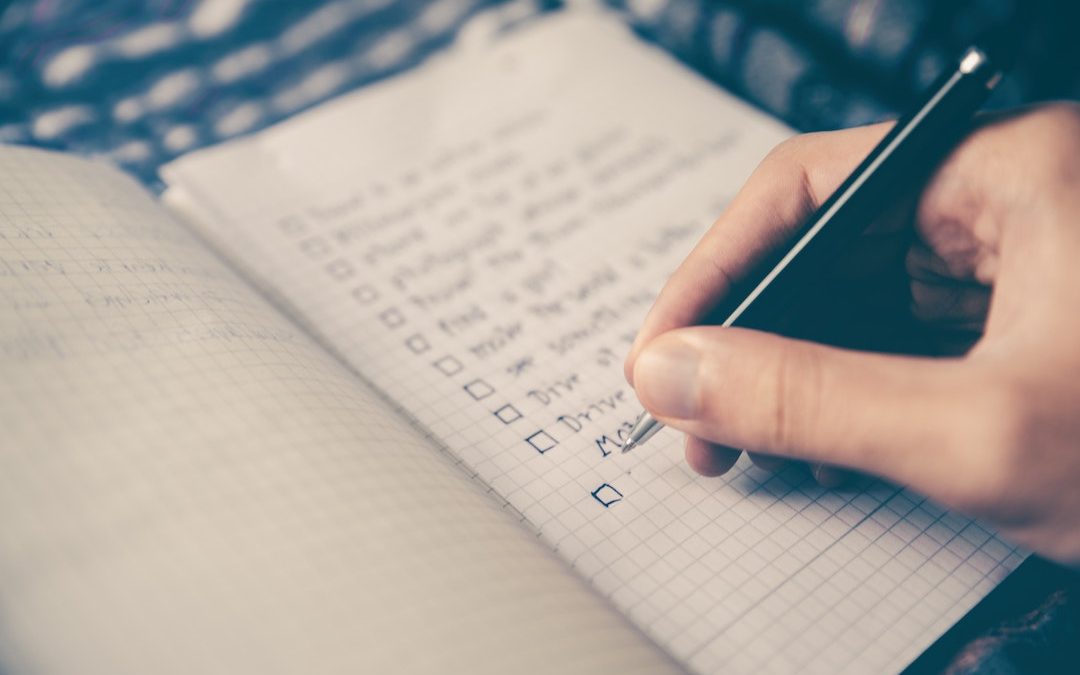
by Rachel Toalson | Wing Chair Musings
Most days I pride myself on being an extremely disciplined person. I make my to-do list, I divvy up my time between tasks, I mark things off with a flourish and a self-congratulatory pat on the back. I manage expectations, I make lists and calendar entries for the smallest of things, I set intentions for every action and interaction (more on this in another month’s newsletter).
This is what it means to be a task-oriented person. And there is absolutely nothing wrong with being a task-oriented person.
But.
There is a dark side to this kind of personality.
A couple of weeks ago my second son celebrated his twelfth birthday. Once our sons reach middle school, we allow them the option to take a day off from school on their birthday—to spend however they want (within reason, of course). When my eighth grader took his day off last November, he spent the entire day live-streaming on YouTube while playing video games. That kind of day-long date with technology is not usually allowed in our home (my middle school sons get an hour of tech per day), but birthdays are yes days. As long as what they do doesn’t harm themselves, other people, or our budget, we try to say yes.
My second son chose a day full of activity. He asked my husband and me to join him.
I had so much to do—editing to finish, chapters to write, emails to send, things to read, research to do…on and on and on. A family dentist appointment had broken up the week, stolen two hours of my time, so I was already operating in catch-up mode, according to my to-do list.
Not only that, but my son’s birthday fell on a Tuesday, in the middle of a regular 36-hour fast for me. He wanted scones for breakfast and pizza for dinner, along with the cake I’d made him the day before.
“You’re going to eat today, aren’t you, Mama?” he said, after we sang “Happy Birthday.” He held up a lemon scone. “You have to taste this one.”
He knows I love lemon everything.
What could I say? I know what I wanted to say. No, I can’t join you today…I have so much to do, and I’ve already lost time this week. No, I’m not eating today; it’s a fasting day, and this is my routine and it will throw off the whole week if I do.
I agonize over discipline-disruptors like this. I think, What if I can’t recover? What if I keep getting farther and farther behind? What if this day off completely obliterates my motivation, which will obliterate my discipline, which will obliterate my forward progress?
It’s a little ridiculous when I see it laid out like that. When did discipline become synonymous with I must do it this way forever and ever and ever or else everything will fall apart?
My husband is the exact opposite. He has no problem shifting into “vacation” mode. He would probably live permanently in vacation mode if he didn’t have a job and family and responsibilities.
Something I’ve been trying to do this year is seize opportunities like this with both hands, as hard as it may be for me to let go of the things I need to do. Who knows how long this son will choose to spend his birthday with his mom and dad? Soon we’ll be replaced by friends. I want to hang out with him while he still enjoys our company.
So I did take the day off. We rode bikes to the neighborhood park, played an hour or so of tennis, worked on a puzzle, talked, went ice skating (his first time), and picked up his brothers from school together.
It was bliss.
And the next day? I got back to work.
Here is a thought exercise that often works for me when I find myself prioritizing tasks over my relationships:
Step one: Ask, If I take a day off, what might happen?
Most of the time the answer is nothing. Except you’ll probably have fun.
Step two: Ask, What might I miss if I don’t take a day off?
The answers vary, of course. We might miss building a deeper relationship with a friend or getting the adequate sleep we need to be productive the rest of our week or seeing our 12-year-old wipe out on the ice and get right back up with a laughing, “I’m gonna be sore tomorrow!” (Not as sore as me, son.)
Step three: Ask, What is more important: What might happen or what I’ll miss?
Sometimes what could happen might be worse—our job is compromised, we miss an important deadline, we leave someone in a bind. But many times what we’d miss (especially when it comes to relationships) is far greater than a hypothetical disaster.

by Rachel Toalson | Wing Chair Musings
Over the years, I’ve written many words and spent many hours of my time teaching about being kind. It’s so important to me, this idea of kindness, that every day, when my sons leave for school, I hug them tight, kiss the tops of their heads (with the exception of the one I can no longer reach—I get his forehead), and say, “I love you. Remember who you are: Strong, kind, courageous, and mostly my son.”
But you know who got lost in this kindness teaching?
Myself.
I don’t mean to say I’m not kind to people. I work exceedingly hard to be kind, even in my interactions with difficult people. I fail like everybody else, of course, because I’m not perfect and sometimes I’m tired and people can be, well, people.
When I say I got lost in this kindness teaching, what I really mean is I will bend over backwards to be kind to someone else, but I have no problem beating myself up for the smallest, most insignificant things.
Just this morning, I went out for my weekly half-marathon run. I’d had a terrible run yesterday, the slowest 15 miles I’ve logged, ever. A sore hamstring has been plaguing me for the last week (I refuse to consider it might be an injury). So I was already beginning my usually-enjoyable half-marathon with some negativity. Don’t make this one like the last one, I told myself. Pick up your cadence. Work hard.
As if I hadn’t worked hard on that 15-mile run.
My self-flagellation worked for a while. I logged faster miles than I usually do on a Saturday morning 13.1. But that sore hamstring paid the price.
It’s been a week exactly like that. I step on the scale every morning, a leftover from weight-loss days, a precaution against gaining anything that will make me unhealthy, turn my runs into miserable slogs, and make my clothes feel more snug than I’d like…but mostly that last one. All week, I fell short of my goal. All week, I looked in the mirror, analyzed, pinched, turned, wrinkled my nose. All week I told myself, You have to do better.
Distraction ruled my work days. My sons’ school was damaged in the Texas winter storm, and my four elementary children were shipped off to three different elementary schools, one more than thirty miles away. The school district recently voted to lift the mask mandate, so now we had quadruple the COVID exposure, with more than 50% of students not protecting their fellow students by wearing masks. I’d write, think about them, worry, wrestle my attention back, think about them, worry, check my email to make sure their teachers hadn’t sent anything of concern, write, walk around, write, worry. Why can’t you just concentrate? I told myself. Why can’t you still your mind like you used to and actually get something worthwhile done?
Not good enough. Those are the words I tell myself the most. That’s not good enough. Your effort isn’t good enough. You’re not good enough.
Do I do this to anyone else? Maybe, in subtle ways, I do it to the people I live with. My expectations of myself often bleed into my expectations of my sons and my husband.
But I have never done it to friends. Acquaintances. Strangers.
Why? Because they deserve kindness more than I do?
Why are we so hard on ourselves?
I know we’re tired. I know we have expectations that haven’t panned out, for whatever reason. I know we feel disappointed, angry, sad, scared, frustrated, unproductive, unimportant, maybe a little bit hopeless.
But that’s no reason to criticize, belittle, and beat up ourselves.
We deserve better. We deserve love and kindness, too.
I challenge you this month to do one kind thing (at least!) for yourself every day.
Here are some things I’m trying:
1 Loving-kindness meditation.
I lie on the floor and focus on my breath for a minute or so, then begin the mantra, May I be well. Maybe I be joy-filled. May I be healthy. May I be strong. May I be kind. May I be courageous. Maybe I be loving and kind. May I be safe. May I be at peace. I end the meditation sending the same thoughts to someone I love.
2. Daily nap.
Between my daily writing sessions, I set a timer for 25 minutes and nap. Even if I can’t manage to still my mind enough to actually sleep, I make sure I don’t beat myself up about it. It’s not wasted time; I’ve stilled my body and the outside world and listened to what’s in my mind and on my heart for 25 uninterrupted minutes.
3. The end.
At the end of every work day, I close my laptop and say out loud, My work is done. Now I can rest. Not only does this send a clear message to my brain that work time’s over—don’t open that laptop or check email again—but it also creates the space to know that what I accomplished during my work sessions was enough.
I’d love to hear what practices you might pick up for yourself.
May you be well. May you be kind and loving to yourself. And may you be at peace.
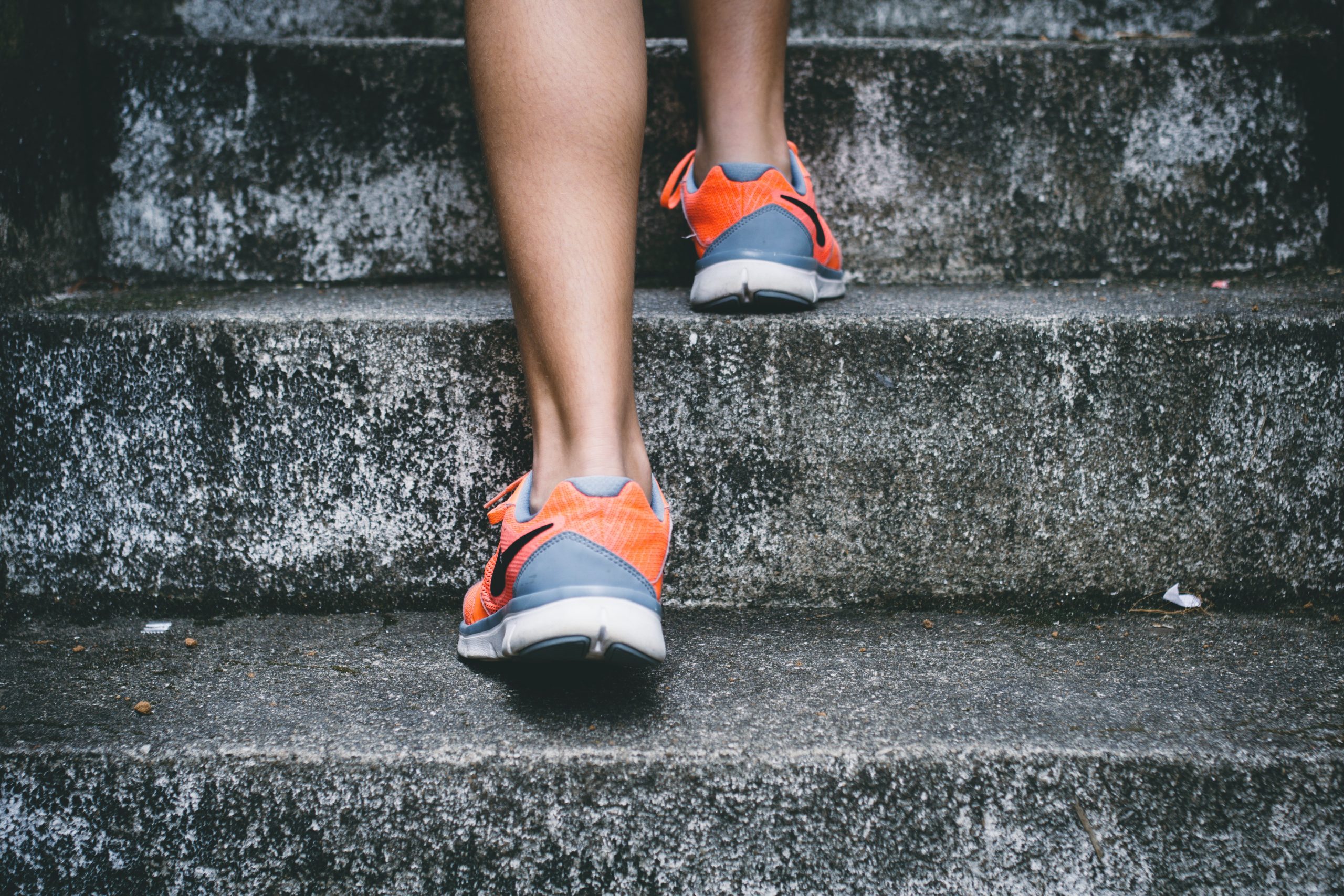
by Rachel Toalson | Wing Chair Musings
I was halfway through my mile warmup, an easy jog down to my sons’ elementary school and back, hugging the curb of low-traffic neighborhood streets, when it slammed into the quiet morning: the honk heard round the world.
It happens occasionally. Someone will see me—a friend, the parent of my sons’ friends, someone I met recently at a school function. They’ll honk a greeting, short, friendly, if still startling enough to shoot my heart rate into sprint zone. It might not be the sort of sound that startles everyone while out running, but it definitely shakes a woman out running alone.
Maybe they don’t think about it. I can forgive them that.
This honk was different.
The driver, whose face I didn’t see (though I assume it was a man), honked for a good three seconds, maybe longer. It was a calculated honk. A mean-spirited one. A threatening one?
It would be foolish not to consider that possibility, that it was a honk meant to scare me. Or warn me. Or make me feel small and afraid.
Get out of my way, it said. Get off the street, it said. Or else, it said.
Or else what? He’d return to make sure I moved, got off the street, ran through grass and rock and all sorts of dangerous tripping hazards? He’d run me over with his big white truck’s giant tires or his black Ford F-150 with windows so tinted you can’t see inside or his blocky silver Kia Soul (sadly, this is not the first time I’ve experienced this sort of harassment from drivers; I memorize all the makes and models, commit them to memory so I know what to look out for).
Or else he’d do worse?
Who can ever tell? I am, after all, a woman running in the dark, alone.
Running alone’s not safe at the best of times, and these definitely aren’t the best of times.
For a split second, I think about chasing the offending driver to the stop sign less than a tenth of a mile away, demanding to know why he chose such a hostile gesture to express his contempt of me.
But I’m a woman, it’s dark, and no one else, for now, is around.
So instead, I spend the rest of my 7.5-mile run flinching at every passing car; watching for his return; sweeping my headlamp over every neighborhood T at each sound that could be footsteps, which could mean danger; and remembering.
It’s the remembering that burns me up inside.
I run to be free. But no matter what safety measures I take, no matter the precautions I practice, no matter where I run or when I run or what I wear while I’m doing it or the weapons I sneak into my belt, my pocket, between my fingers—
I am not free.
•
Maybe he didn’t mean anything by it.
Or maybe he meant everything I think.
When you’re a woman, you don’t have the luxury of believing the streets are safe, you are safe, a three-second (was it longer? Maybe.) honk meant nothing. It’s not fair, but there it is: every footstep, every car, every person, every noise, every strange sight, every leaf twirling on wind, caught in the peripheral vision, is a potential peril.
There are trails that run through my neighborhood. They would get me off the roads, away from cars. They’d be easier on my joints and bones, too, as I increase mileage and prepare for longer races. I wouldn’t have to deal with drivers honking, disrupting the peace of my run.
But you won’t ever find me back there, removed from civilization, as nice as the experience sounds.
That’s a line I won’t cross, because I want to make it back home.
•
Runner’s World reports that 84 percent of female runners have been harassed at least once while out running. Some of those harassments have ended in death.
We have rules: Don’t run in the dark, don’t run in isolated areas, share your route—but not with everyone, change your routes, ditch the earbuds, carry pepper spray (and whistles and weapons and phones), always stay alert to what’s around you.
I can’t get tired. I can’t drift off into my own world, let my mind wander. I can’t take a single step without keeping my guard securely in place.
It’s exhausting.
I am not free.
•
A few days ago, a friend texted: I dropped off a safety whistle, hung it on your front door.
A woman’s body was found dumped on the highway, in a construction zone, less than two miles from my house. I run a route right past the location where she was found. Rumors say sex-trafficking activity has increased in the area. A man from one of the neighborhoods I pass nearly every day has been apprehended for streaking. Multiple times.
I know you go out alone, she said. Make sure you take the whistle.
It’s another necessary thing weighing me down. Already I no longer go anywhere without my running belt, which carries my water, identification, pepper spray, and a personal alarm. I never leave the house without my phone or an easily-retrievable key in my pocket. Maybe I should get a Tigerlady self-defense claw? A stun gun? A Go Guarded Ring?
Should I brush up on my self-defense training?
Before I leave the house, I text my husband my route. If I get out on my run, feel good enough to tackle some higher hills or log more miles that day, I stick to the pre-planned route anyway, because, well, you never know.
I wear a headlamp, reflective gear, neon shirts, shoes with reflective pieces, a vest, a belt with all the above-mentioned items. How many extra ounces do I carry just so I can return home to my husband and sons, safe and sound?
•
My husband runs with two Apple earbuds, the world completely blocked out by whatever podcast or audiobook or Amazon playlist he’s listening to. I wear one Apple earbud, if any at all, because I have to be constantly, diligently aware of my surroundings—that car moving suspiciously slowly, seeming to follow me; a man on a bike about to pass…or stop?; a figure stepping unexpectedly out of the trees, right in my path.
Maybe they’re all innocent people, out for one innocent reason or another. But believing everyone’s innocent doesn’t keep a lone woman safe on a run.
My husband doesn’t even wear a headlamp in the dark.
“I don’t know how you run without a light,” I said during a recent Saturday morning recovery run, when my pace slows enough for him to join me.
“I wish you could experience it,” he said. “Feeling the ground underneath you, feeling one with nature, getting away from the lights. It’s like you can just fade into the darkness. Be, I don’t know. Free.”
Just the thought of that kind of darkness makes my skin crawl.
How many dangers wait for a woman out in the dark?
I am not free.
•
I deserve to feel safe when I run. I deserve to start and finish my runs focused on my breath, my steps, the way I feel, whatever’s on my mind, not anxious about the loud whipping wind and the dangers it might mask during the seven miles, twelve miles, twenty miles I’ll log for the day. I deserve to be free.
But that is not the world I live in. I’m reminded of that every time I text my route to my husband, every time my pepper spray thumps against my thigh, every time someone blasts a three-second honk in the middle of a still-sleeping neighborhood.
“Maybe you should stick to the treadmill,” my ten-year-old son said tonight at the dinner table.
For sixteen miles? Torture.
He nodded. “Yeah. That would be hard.” He sighed. “It’s not fair.”
It’s not, I agreed.
Maybe you should run with your husband, you might be thinking.
He runs at a slower pace than I typically do, and he doesn’t log nearly the mileage I cover. His longest run of the week is my shortest one. He prefers Camp Gladiator, high intensity interval training, strength sessions, not long meandering runs through our side of the city.
Well, maybe you should stop, then.
I won’t. I won’t let them make me.
I shouldn’t have to.
I deserve to feel safe when I run. I deserve to enjoy every minute of my chosen activity. I deserve to be free.
•
So what, then, is the solution?
I wish I could say I had a solution. But I don’t. There are no simple solutions to this problem.
But changing the conversation would be a start. Instead of asking, What can she do to protect herself better when running, ask, “What can we, as a community, do to help keep her safe when she’s out running? How can we make our streets safer for women who choose to run alone? What can I do to look out for female runners out on their own?”
Well lit streets help. Looking out for each other helps. Men being aware of the dangers women face, committing to doing their part in making sure they feel safe helps.
Beyond that? Let us run.
Let us run in the streets. Let us run in the middle of the road, if we want. Let us run on shoulders or in bike lanes or hugged up against curbs (did you know it’s safer for a woman to run on streets than on a dim-lit sidewalk flanked by trees? Attackers don’t usually venture into the middle of the street; they step out of sidewalk shadows).
Just…let us run.
•
I finished my morning’s 7.5 miles faster than I’ve ever run them before. A bright end to the less-than-bright beginning? Maybe. Maybe not.
I didn’t run alone today. But I could have done without the anger and fear that kept pace with me the whole seven laps through my neighborhood. I would rather have spent my energy on giving everything I had to that run, instead of checking over my shoulder, bracing myself for the honking driver’s return.
I run to be free.
I am not there yet.

by Rachel Toalson | This Writer Life
When I visit kids at schools, someone usually asks me if I just write my book and that’s that. It’s a humorous question to me; a book is hardly ever finished the first time it comes out on paper (there is, of course, the very, very rare exception). But students are often surprised to know just how many drafts my books require.
It’s impossible to say, when I’m first starting a book, how many drafts it will take to perfect it (in my eyes, at least). Drafting is like starting with a big block of wood that has little shape and whittling it down to something artistic and beautiful. Sometimes that can be done in five drafts, sometimes it takes twenty. Most of my books take seven or more—intentionally. I have a process that infuses time and space into the workflow, and that is necessary, for me, to write the best book I can. Time and space allow me to approach my manuscripts with the impassivity of a reader reading it for the first time.
The above picture is my workflow. I spend the bulk of my time researching and brainstorming characters, plots, locations, emotional arcs, and character relationships. Once that’s finished (and sometimes I have 20,000 words of brainstorm during this stage), I write the first draft. I don’t self-edit, don’t change anything, try not to even backspace for this first draft. I just get all the words onto the page as fast as I can. Then I set the manuscript aside for a month or two.
Draft two is for deepening scenes, focusing on the emotions and descriptions, bringing settings to life. Once finished with draft two, I again set the manuscript aside for one or two months. Before draft three I read through the manuscript and make notes—what are the confusing places? Are there any plot holes? What needs more research to really come alive? Are there inconsistencies? I make a triage list of what needs tweaking in the next draft.
Other drafts focus specifically on language. One draft includes multiple “passes,” reading through the manuscript for specific things—one pass for characterization, one for dialogue, one for beginnings and endings of chapters, one for symbols, motifs, and epanelepsis (returning to something later that was introduced earlier but changed).
My process differs between picture books, poems, and essays, but at the heart of it, it remains the same. Books and poems and any piece of writing takes time, and we can’t rush the process. I find that every draft I do—some of them complete rewrites, some of them just tweaks—brings me closer to the heart of my story.
How do you know you’re done? I don’t have a definitive answer for that. Every story is different, and the truth is, you likely could go on revising forever and ever. I could revise my published books, if my publisher permitted me. At some point, in order to get our work out into the world, we have to type, “The End.” You’ll know when it’s the right time.
Don’t be afraid to let it go.











